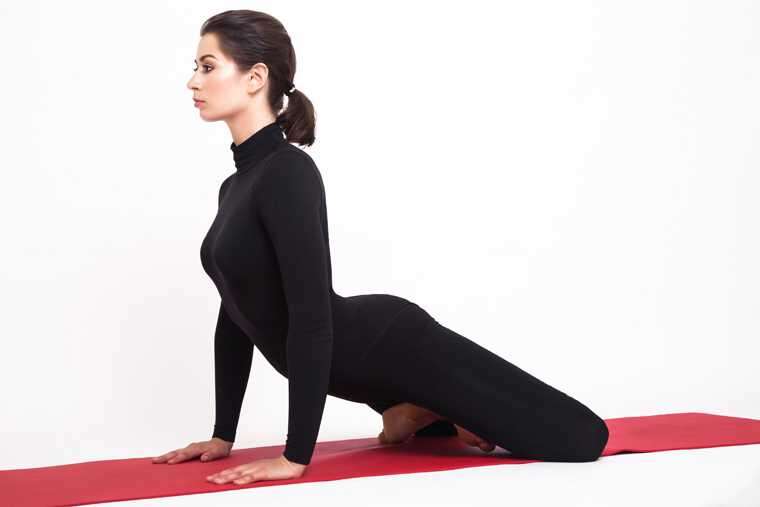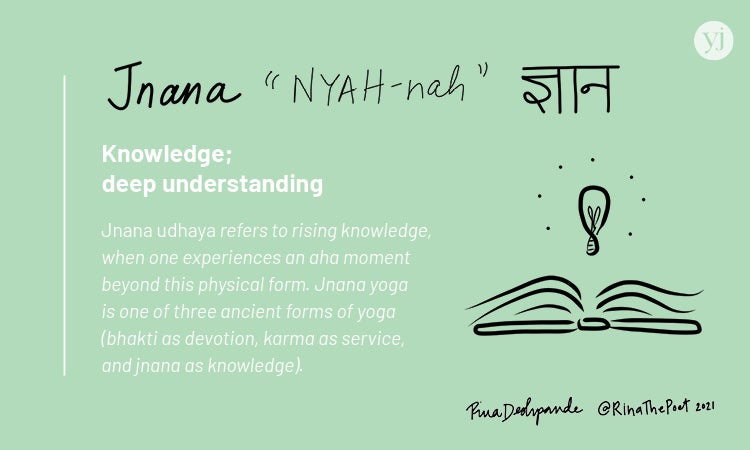
According to a 2012 New York Times article, yoga can damage your back or even kill you. This article was based upon cherry-picked anecdotes and many of them were exaggerated. These stories, however, were not representative for the overall yoga experience. Yoga is generally safe, according scientists. Here are some tips and tricks for beginners interested in learning more about yoga.
Yoga is a form and exercise that can offer many health benefits. If you are suffering from an injury, it is best to stop practicing yoga immediately. Continued practice can lead to more complications such as hemorhoids or cause pain. You should seek medical advice and consult a teacher of yoga in such cases. Find a qualified instructor who can help with issues related to your hips.

Incorrectly performing yoga poses can lead to serious injuries. For example, if you're recovering from knee surgery, you should check with your doctor before starting a yoga program. While the poses can be modified to minimize these risks, you should still consult a doctor before attempting them. Yoga is not suitable for all people who have heart or lung issues. As with any exercise, the most common problem related to excessive yoga is heartburn.
Avoid yoga for people with serious health issues. Some poses like Paschimottanasanasanasana (Padmasana) can be dangerous. If you're suffering from knee or disc pain, don't try yoga for these situations. You risk injuring your own body or worse, getting hurt. It is important to practice safely and consistently to avoid this.
The benefits of yoga practice are many, but some aren't worth it for everyone. Some poses can cause damage to your knees but are usually safe for most people. It is best to adapt the poses to your health and fitness level. Do not place too much stress upon your knees if arthritis is a concern. Besides, you shouldn't do them if you're pregnant or have high blood pressure.

Yoga is a wonderful way to relieve stress, improve your health and be more positive. However it can be dangerous for certain people. It's not just about reducing your stress, it can cause serious injury. Yoga that is very intense may include stretching your legs or standing on your head. These poses can cause injury. Most types of yoga are safe, and can even improve quality of your life. However, it is not for everyone. It can be good for your physical and mental health but it can also pose a danger for some.
FAQ
Is it true to say that protein overeating can lead to kidney stones?
Protein is important for maintaining healthy bones and tissue. However, too much protein can result in calcium excretion through the urine. This can lead to kidney stone formation.
It's important to note that not everyone gets kidney stones after eating more than 2 grams of protein per kilogram (2.2 pounds) of body weight. It is possible to eat high levels of protein without developing kidney stones.
By watching how much sodium you consume, kidney stones can be prevented. Sodium is important for maintaining the body's water balance. Too much sodium can lead to kidney stones.
If you have kidney stones, you can reduce your intake of protein. Protein provides about half of the daily caloric needs for most adults. It is possible to lose weight by cutting down on your intake of proteins.
If you do decide to eat more protein, don't go overboard. Aim for less than 20% of total calories from protein.
Is it possible to go to the gym every day of the week?
Yes, you can go to the gym seven days a week but not all at once. You need to find a time that you are able to do this without feeling exhausted or drained.
This will help keep you motivated and give you energy for other activities.
It is important to eat right during these times. This will ensure you don’t feel tired and sluggish going to the gym.
You must ensure that you don't have any other competing demands on your time. You might want to avoid working out on school nights if you have kids. They can distract you from your exercise routine.
How to build muscles quickly
Fast muscle building is possible by eating healthy foods and regularly lifting weights.
The best time to work out is early morning when you are fresh and ready for action!
It is a good idea to do exercises like push-ups (pushes), bench presses (squats), and so on.
Use different weight training techniques and drink plenty water throughout the day.
Do I have to do it every day?
No! You should do at least 30 mins of moderate-intensity activity 5 days per week. That could mean walking fast enough for you to get slightly out of breath and biking hard enough for you to sweat.
Statistics
- According to the American Academy of Dermatology (AAD), men over 50 are at a heightened risk of developing it. (healthline.com)
- 10 pounds in a month is likely during a lean bulking phase, especially for beginners. (muscleandstrength.com)
- Candidates and applicants must pass all four tests at 70% (minimum level) to graduate from Basic Deputy U.S. Marshal (BDUSM) Training. (usmarshals.gov)
- An estimated calorie range for moderately active adult males falls between 2,200 to 2,800 calories per day, depending on age. (eatright.org)
- Cardmembers earn 5% Back at Amazon.com with a Prime Credit Card. (amazon.com)
External Links
How To
How can I exercise to burn fat?
Exercise helps you lose calories by increasing your metabolism and oxygen intake.
If you exercise with moderate intensity, you can safely lose weight.
These are the top tips for burning fat while you exercise.
-
Do cardio exercises such as walking, swimming, jogging, cycling, running, or elliptical training.
-
Do 30 minutes of exercise three times a week.
-
Strength training is a great way to lose weight.
-
Avoid intense training. You can build muscle and not break down muscle tissue.
-
When exercising, make sure to drink lots of water. Water helps to flush out toxins from the body and maintains proper hydration.
-
After exercising, consume low-fat protein smoothies. Protein shakes repair muscles and increase energy.
-
Eat smaller meals throughout the day, so you don't feel hungry between meals.
-
Don't skip breakfast! Skipping breakfast can leave you feeling tired and sluggish.
-
Take care of your mind. Stressful situations can affect your metabolism.
-
Keep a positive attitude. Studies have shown that people who are convinced they are overweight gain more weight than those who feel they look attractive.
-
Get enough sleep. Lack of sleep makes it harder to burn fat.
-
Be active. Get up every hour and get moving.
-
Maintain a healthy diet. A healthy diet will help you feel fuller for longer.
-
Relaxation is possible by finding ways to relax. Tenseness can cause stress hormones to break down muscle tissue.
A balanced diet includes all essential nutrients needed for growth and development.
Eat six small meals each day instead of three large ones. This gives your body more time to digest the food you eat.
You need about 500 milligrams of calcium daily to maintain strong bones. Calcium can also be found in milk products, yogurt, fortified Soy beverages, orange Juice, cereals and bread.
Calcium can be found in leafy green veggies, beans, tofu and nuts as well as seeds, nuts and cheese.
Vitamin D is essential for calcium absorption. Vitamin D can also be found in some fortified foods such as eggs, fish, and yolk.
Vitamin E is important for skin health. It's found in vegetable oils, wheat germ oil, peanuts, almonds, sunflower seeds, and corn.
Your body needs zinc for normal immunity function and wound healing. Zinc can be found as a mineral in oysters.
Zinc deficiency may cause fatigue, loss appetite, depression, and impaired immunity.
Consuming too much sugar can cause insulin resistance. This causes an increase in blood glucose levels. Insulin resistance can lead to weight gain.
Insulin resistance develops when there are high levels of free radicals in the bloodstream. Free radicals refer to molecules that contain unpaired electrons. They can damage cell membranes and other body parts.
Most free radicals come from pesticides herbicides, food additives, preservatives smoking, radiation, chemical in cosmetics, lotions and household cleaning supplies.
Free radical damage may lead to cancer, heart disease diabetes, arthritis, asthma and other conditions.
A well-balanced diet rich in antioxidants is the best way for you to avoid free radical damage. Antioxidants protect against oxidative damage.
Vitamin C (found on citrus fruits), Beta carotene, found in carrots and sweet potatoes, spinach and broccoli, cantaloupe (found in tomatoes, mangoes and peppers), and Vitamin E (found nuts, olive oil and avocados).
Other antioxidant nutrients include selenium, copper, manganese, and zinc.
Selenium is known to protect cells from the oxidative damage that free radicals can cause. Selenium may be found in Brazil nuts as well tuna, liver and kidneys. It can also be found on shrimp, cod, turkey, beef lamb, pork, chicken, and other foods.
Copper protects eyes, brain, lungs and red cells. Copper is also found in poultry, meat, and organs.
Manganese plays an important role in bone structure. Manganese can also be found in oatmeal, brown rice, spinach and bananas.
Zinc helps with normal growth, reproduction, as well as wound healing. Zn is present in lean cuts of meat and white fish, as well as eggs.